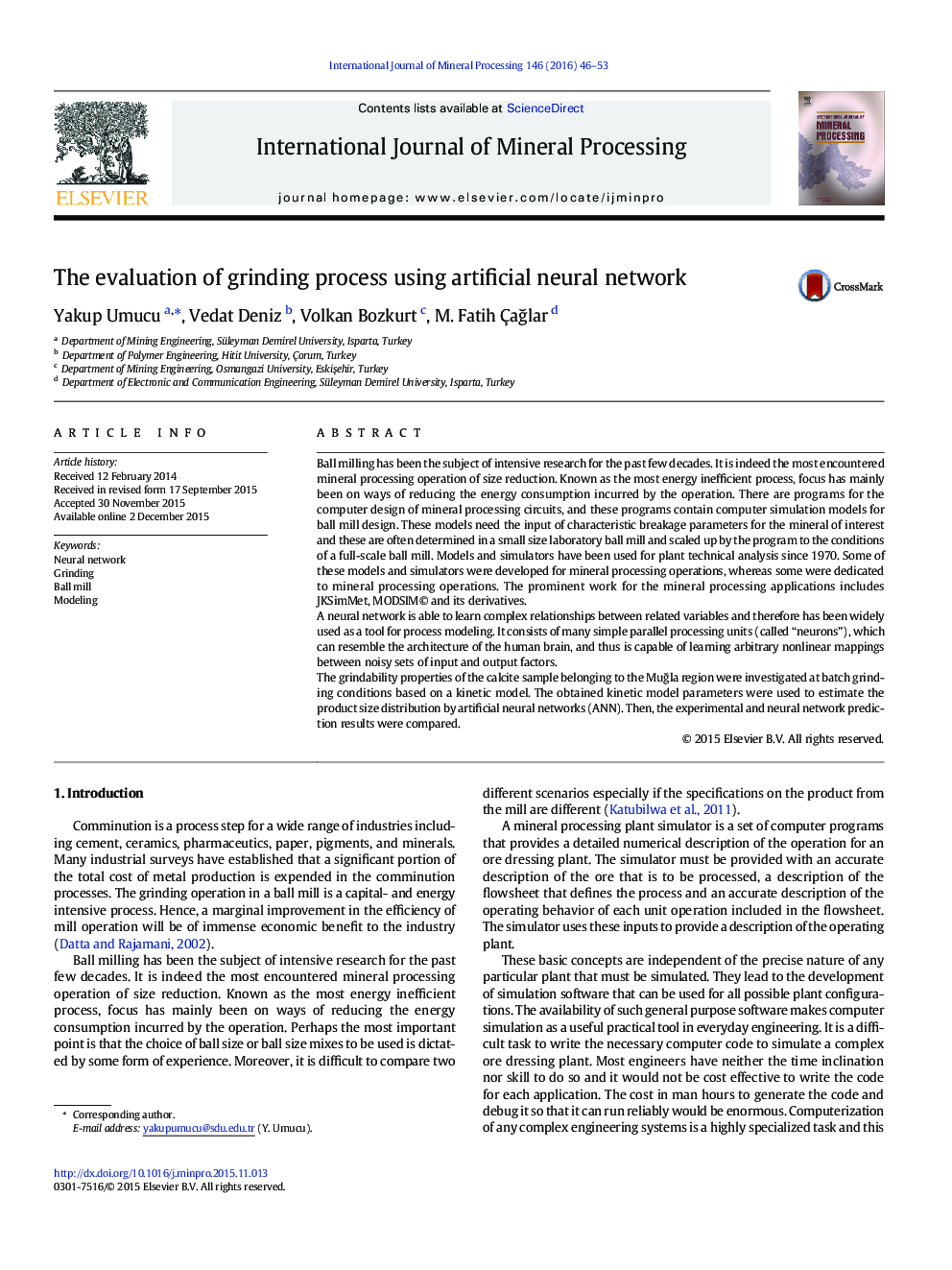| کد مقاله | کد نشریه | سال انتشار | مقاله انگلیسی | نسخه تمام متن |
|---|---|---|---|---|
| 213811 | 1425787 | 2016 | 8 صفحه PDF | دانلود رایگان |
• The size distribution of the product is estimated from kinetic model parameters, was performed efficiently prediction using artificial neural networks (ANN) except for the package program in this study.
• The absolute fineness is important factors with changing the powder filling ratio for the optimal operation of a ball mill.
• In this study, more different results were found than other researchers in terms of some kinetic parameters.
• it is clearly seen that material rate increases, it is observed decrease in the value of aT, γ and Φj values determined changes in a similar manner. The specific rate of breakage is expected to decrease with the increase in the rate of powder filling.
• In addition, calcite sample has the large crystals, the specific rates of breakage rate has not decreased in coarse sieve size. Powder filling increases, while decrease the specific rate of breakage is due to the increase in the rate of gap filling. The same argument can be based on reason for the lack of increase in the rate of fine materialTherefore, it has appeared that the grinding kinetics for each material must be evaluated in order to lower the energy costs in grinding process.
Ball milling has been the subject of intensive research for the past few decades. It is indeed the most encountered mineral processing operation of size reduction. Known as the most energy inefficient process, focus has mainly been on ways of reducing the energy consumption incurred by the operation. There are programs for the computer design of mineral processing circuits, and these programs contain computer simulation models for ball mill design. These models need the input of characteristic breakage parameters for the mineral of interest and these are often determined in a small size laboratory ball mill and scaled up by the program to the conditions of a full-scale ball mill. Models and simulators have been used for plant technical analysis since 1970. Some of these models and simulators were developed for mineral processing operations, whereas some were dedicated to mineral processing operations. The prominent work for the mineral processing applications includes JKSimMet, MODSIM© and its derivatives.A neural network is able to learn complex relationships between related variables and therefore has been widely used as a tool for process modeling. It consists of many simple parallel processing units (called “neurons”), which can resemble the architecture of the human brain, and thus is capable of learning arbitrary nonlinear mappings between noisy sets of input and output factors.The grindability properties of the calcite sample belonging to the Muğla region were investigated at batch grinding conditions based on a kinetic model. The obtained kinetic model parameters were used to estimate the product size distribution by artificial neural networks (ANN). Then, the experimental and neural network prediction results were compared.
Figure optionsDownload as PowerPoint slide
Journal: International Journal of Mineral Processing - Volume 146, 10 January 2016, Pages 46–53
